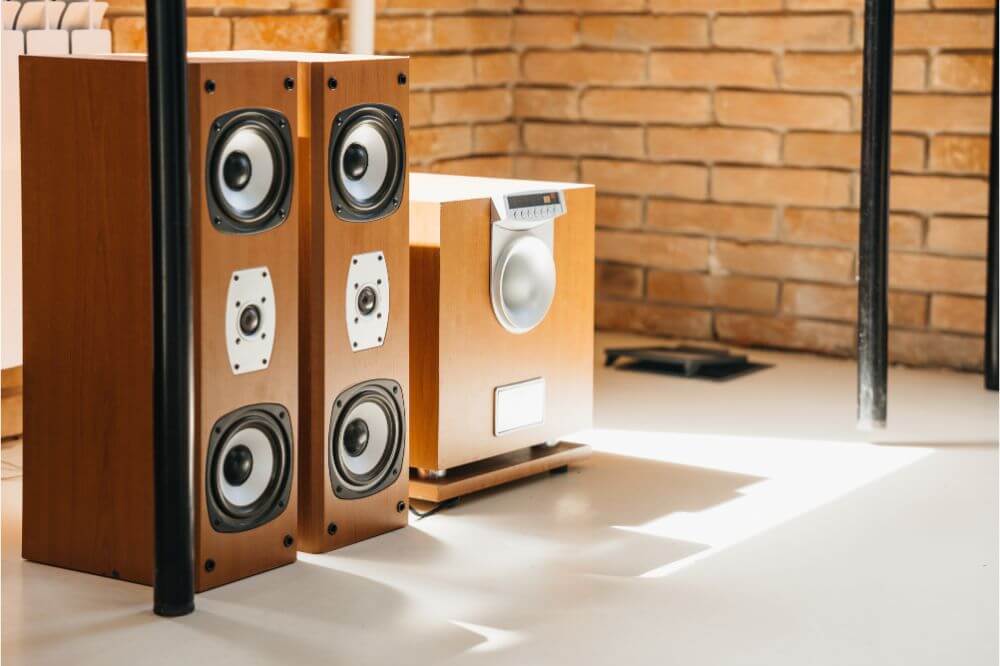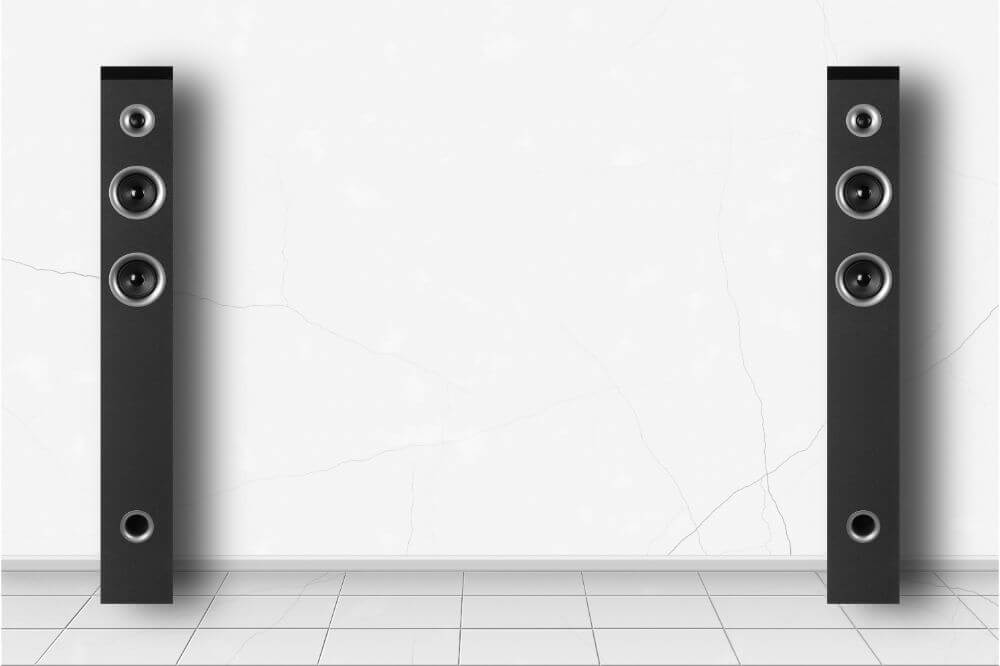Soundbars are amazing little inventions that came out around the same time as flat-screen televisions. While these TVs can provide us amazing, high-definition, and incredibly detailed images, this came at a cost. The sacrifice for crystal-clear imagery was made with their tiny built-in speakers, which have poor quality in comparison.
This is why we have soundbars, which fully enhance the viewing experience. These thin speakers provide you with much higher sound quality than what our televisions can provide. In this article, we will speak a bit about soundbars, subwoofers, and why you might want a soundbar and optionally a subwoofer.
So without further ado, let’s take a look at do you need a subwoofer with a soundbar or if it is just a superfluous piece of equipment.
What Does a Soundbar Do For You?
The main reason soundbars are so popular is the degradation of sound quality in newer television models’ built-in speaker system. The design of these speakers often feels counterintuitive.
They can barely convey dialogue in any clear manner, and they cannot reproduce any of the bombastic, crashing noises that keep us glued to our seats as we are captivated by movies and shows. Plus, the speakers are more often than not facing the wrong way, being on the wrong side of the television, so the sound always comes out more muted and indistinct.
This is the main reason why soundbars are so popular. They are a means to circumvent the awful sound quality of the standard speakers from our TVs and give us that fantastic and immersive sonic experience, whether stereo or surround sound. They do have one impactful weakness, though — they have rather poor bass potential.
Otherwise, they are fantastic for heightening the impact that your shows have sound-wise. The sound design of a production is often half the experience, so to get the full effect as intended is merely sublime. Another great feature of soundbars is that they are mostly self-powered, using their built-in amplifiers for extraordinary sound quality.
Also, they have a significant upside compared to the more older, non-powered models that relied on external amplifiers: They are far easier to set up and use, as you do not need any additional pieces of equipment. For most people, this is enough. At the end of the day, we are almost all willing to sacrifice a little bit of quality for more comfort and ease of use.
One downside of this is that more and more of these soundbars are being made to rely more on their built-in amplifiers, not secondary ones like through a receiver, which would almost always increase the quality further.
Receivers are amazing devices that allow you to enhance the entire viewing experience and better control your home theater setup. As we said, though, this is a bit more cumbersome to set up and use, so it is up to the user if they want to go the extra mile in getting the most out of their sound system.
What is a Subwoofer Good For?
Now that we have covered what a soundbar is, we can briefly discuss what a subwoofer can do on top of a soundbar.
As previously mentioned, one of the downsides to a soundbar is the subpar bass capabilities. One of the answers to this problem is to include a subwoofer in your setup.
Subwoofers add dynamic bass frequencies that play alongside your regular stereo or surround sound system, adding another layer of quality. With a subwoofer, you will get the full experience of the bass explosions in action movies and the deep, somber notes of dramas and romances.

How Well Does a Subwoofer Work Alongside a Soundbar?
As you can imagine, subwoofers work quite excellently alongside soundbars! This is because they cover some of the weaknesses and add another dynamic layer to the sound quality to help you enjoy a broader range of audio frequencies.
In layman’s terms, this means you can get all the high quality from a soundbar that you would expect without suffering the weakness it often has with the bass quality. Getting a subwoofer to work alongside a soundbar can be quite tricky, however, and we will explain it briefly in a later section. For now, let us just cover how essential a subwoofer actually is alongside a soundbar.
Strictly speaking, you do not need a subwoofer for a soundbar to work or even to have a pleasant experience with the sound quality. Think of it as a final addition, the cherry on top of your sound system. It merely enhances the system’s quality even further, so it is perfect for those who are either dissatisfied with their audio quality or want to push the audio to get the absolute most that you can from it.
One of the upsides is that the subwoofers are wireless more often than not, so where you put them in relation to the soundbar is up to you for what you want to get out of it. The wireless functionality only pertains to their connection to the soundbar, so you will still need to plug it into a power socket or outlet to keep it powered.
Altogether, this means you can keep it anywhere in the room as long as the sound can travel comfortably. You will not have to worry about positioning the subwoofer near the soundbar or finding space around the TV.
You can simply stick it against the wall or in a corner, and the low-frequency bass notes will travel and reverberate around the room. Human ears already have difficulty finding the source of these low frequencies, so where you put it will have little negative impact and will only enhance the sonic experience.
Adding the Subwoofer to Your Soundbar
If you have decided to go that extra mile and include a subwoofer with your soundbar, there are some things to keep in mind. It is not the most straightforward of processes, but it is not exactly rocket science, either.
Generally, you will not be able to install a standalone subwoofer with your soundbar, as compatibility is something to be aware of. Typically, subwoofers will come alongside your soundbar, so you can be assured they are compatible, as they were designed to work alongside each other while still being an optional attachment.
Some soundbars might not come with a subwoofer, but they are designed to work with the other paraphernalia that the manufacturing company makes. For example, you might purchase a Samsung manufactured soundbar and find that it is compatible with other Samsung products, so you can then buy an additional subwoofer.
When you make your purchase, always be sure to check the soundbar’s specifications to see if there are any compatibilities or ask the retailer if they know of any other options.
Summary
Subwoofers are fantastic additions to any sound system you might have, especially when it comes to soundbars. Soundbars are great for adding high-quality audio output, while the subwoofer is added to cover the weaknesses of the soundbar.
The two of them in tandem make for a great stand-in for a home theater sound system with their all-in-one design. While it may be tricky and cumbersome to set up, getting two compatible pieces will make the experience that much more satisfying and rewarding.
And there you have it! The answer to whether you need a subwoofer with a soundbar. We hope that you will now be able to enjoy your movies and series with amazing sound.


